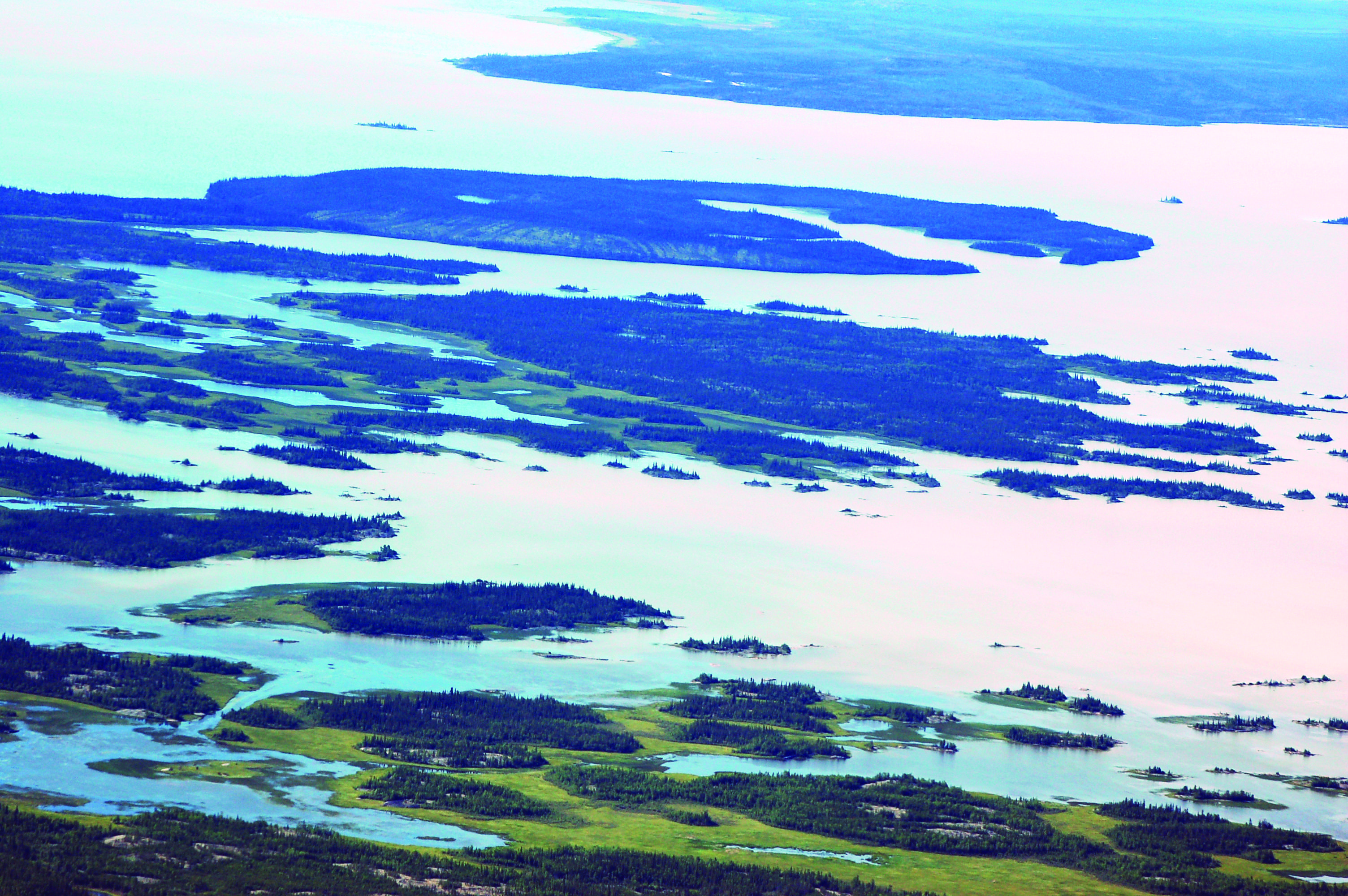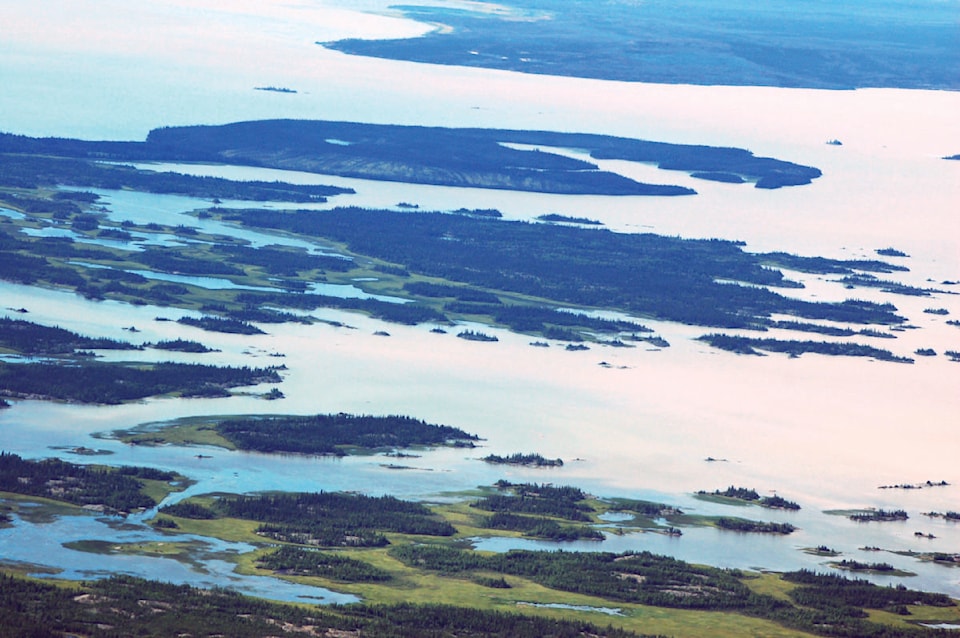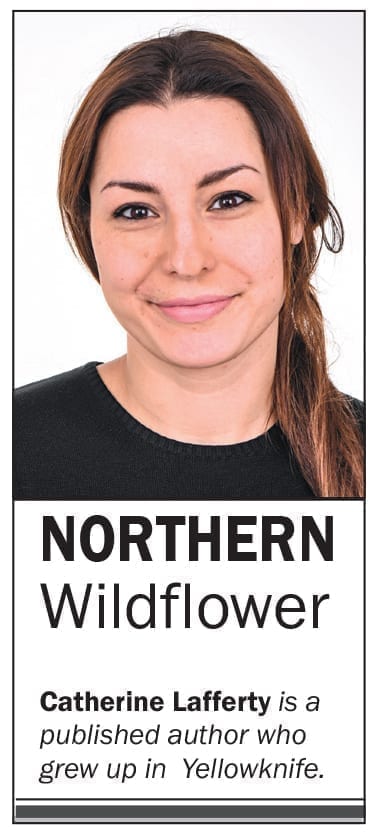People refer to me here at school as Katłįà, they can’t pronounce my name but they try. It’s the name that I asserted when I first started law school as we each went around the class introducing ourselves. It’s the name that I have been called since I can remember.
My grandmother used to call me Katłįà when she referred to me in our language to my great aunts and uncles. Mary Rose Sundberg solidified my name this past summer when she spelled it out for me on a napkin, since then I try to remember to assert my name in my language as it reminds me of who I am and where I am from.

The bay cutting into this point on the North Arm of Great Slave Lake was once home to Old Fort Rae.
Similar to the importance of our names, the places where we are from have much significance on us. The places that we are from ground us in who are. When I tell people where I am from I say Yellowknife but then I tell them I have a strong connection to the place where my grandmother was born, a place called Old Fort Rae.
For those that don't know where Old Fort Rae is, it's a beautiful piece of land that stretches out into the middle of the North arm of the Great Slave Lake, from above it looks like a perfect circle, yet in fact it is a crater made up of Acasta, the oldest rock in the world.
It was named after an explorer that went by the name of John Rae and so it is mapped with his name however there is a Tlicho name for the island that my grandmother was born on and her mother and her mother's mother and so on. It has much greater significance than the name of the explorer that arrived long after they did. It was originally called Nishi meaning place of the giant, a name that points to Dene legends, a name that holds so many answers to the question of our histories.
Along with our names and places, our ethnicities tie into our place names very closely. I identify as Dene but I am not full Dene. I have the choice to be identified legally as First Nation or Metis, but I chose to keep my First Nation status. Interestingly, on a visit out to Nishi a few years ago with my cousins, we realized as we sat around the campfire that we were each divided by government assimilation tactics.
Although we were all close kin, we were all very different in terms of how the government classified us. I identified as being Yellowknives Dene while my cousin identified as Tlicho and my other cousin identified as Metis. It was ridiculously complicated on paper and it only served to separate us.
The government may have succeeded in causing friction between First Nations and Metis but they did not succeed in dividing our families based on our names, places and who we are and how we are connected to ourselves, the land and one other.

